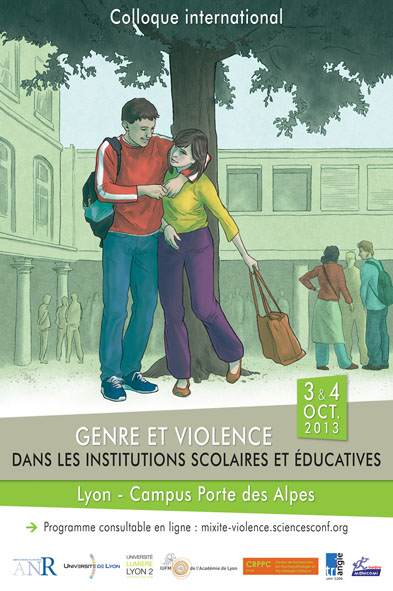Our paper draws on research conducted in five EU countries in the frame of the project “Children's Voices”[1] which aim was to identify the frequency, forms and factors of interethnic violence – violence based on ethnicity, nationality, religion or skin colour – in the school environment of 10-12 and 17-18 year old pupils. The paper aims to analyse the gendered dimension of interethnic violence between pupils and the intersection of gender and ethnicity. Our paper focuses less on the differences in the frequency of violent experiences between boys and girls but rather tries to analyse the different “options of action”[2] boys and girls refer to when participating in and experiencing violent situations. This leads to a discussion on the construction of ‘masculinities' and ‘femininities' – in the countries under study – and how these constructions are adopted in (and reinforced by) teachers' perceptions. Finally, the paper will discuss the different experiences of pupils with (interethnic) violence from an intersectional point of view. Our results imply that on the one hand the frequency and forms of interethnic violence experienced at school is determined by several factors, namely age, gender and to a less extent ethnicity/nationality. On the other hand we found out that interethnic violence has to be contextualized in the dynamics of violence: Violent situations in the school environment (disputes/fights about a lost soccer match e.g.) might provoke interethnic violent (verbal) practices. During violent processes, for instance, pupils insult each other by referring to the respective ethnicity or nationality or also bodily characteristics. In this regard it is interesting that these attributions or stereotypes often differ with respect to ethnicity and gender. At the same time violent practices are practices of doing gender. Hence, interethnic violence is related to gendered stereotypes, which differ in our country sample. Interethnic violence experiences of girls e.g. in Austria, England or Slovenia are often in the context of them being ‘Muslim girls' and wearing a hijab. On the other hand boys' experiences for instance in Slovenia – who or whose parents migrated from southern countries of Ex-Yugoslavia – have to be located in the context of being ‘southerners' – boys with specific (bodily) characteristics and attributions (as e.g. always wearing a tracksuit).
[1] The project was funded by the EU's Fundamental Rights and Citizenship Programme. A quantitative and qualitative study was implemented in the EU countries Austria, Cyprus, GB, Italy and Slovenia. On the one hand more than 3500 pupils were asked to fill in a questionnaire and on the other hand we held 40 focus group discussions with pupils on their experiences with interethnic violence in the school environment. Furthermore, qualitative interviews with teachers and experts were conducted.
[2] Bereswill, Mechthild (2011): Gewalt-Verhältnisse. Geschlechtertheoretische Perspektiven. In: Kriminologisches Journal. Ausgabe 01. p. 18
- Presentation

 PDF version
PDF version

